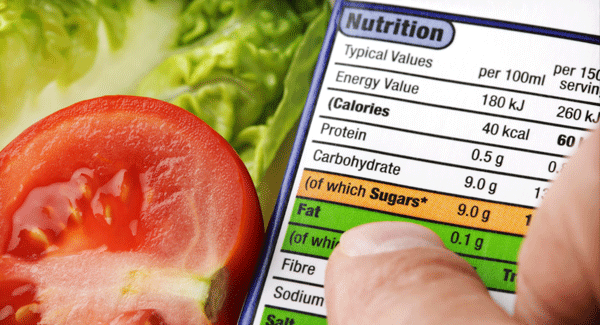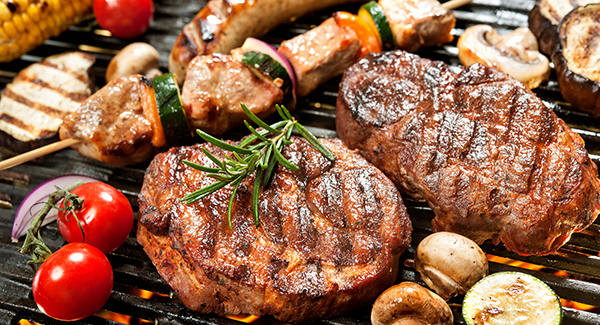How to Eat Less Salt
Excess salt consumption can raise your risk of serious health problems.
By Linda Richards
Health experts agree: Too much salt is a bad thing. But how much is too much? According to the Centers for Disease Control and Prevention (CDC), people over 51 years old, African Americans and those with high blood pressure, diabetes or kidney disease should get 1,500 mg – about ½ teaspoon – of sodium each day. Everyone else should limit salt to less than 2,300 mg a day. Yet the average American eats about 3,400 mg of sodium a day.
Why Excess Salt Intake is Risky
Too much salt makes cells attract water like a sponge. “The retention of water increases pressure on blood vessels and raises blood pressure,” says Lalita Kaul, PhD, nutrition professor at Howard University Medical School in Washington, D.C. Cutting down on salt can lower your risk for high blood pressure, which can lead to stroke, kidney disease and a heart attack. Eating less salt may also reduce calcium loss from bones, reducing osteoporosis and fracture risk.
People with rheumatoid arthritis (RA) may feel the effects of salt even more. Corticosteroids, commonly used to treat RA, cause the body to hold more sodium. Kaul’s advice: Keep salt to less than 1,500 mg daily.
Easy Ways to Lower Your Salt Intake
Even if you aren’t a “salt shaker,” you may get too much. Nearly all canned, ready-made convenience foods contain sodium to keep them from spoiling, and restaurant cooks add extra salt to make food tasty. If you find a low-sodium diet too bland, perk up the flavor with herbs and spices. At first, foods may not taste salty enough, but over time they may start to taste too salty. And that’s a good thing, says Kaul.
Try these tips to help cut back the amount of salt you consume each day:
- Read labels carefully. Salt by any other name is still salt. Look for salt’s alias – sodium. The higher up on the ingredients list it appears, the more salt is in the product. Look for products labeled sodium-free, salt-free, low-sodium, very low-sodium, reduced or less sodium or light in sodium.
- Fake it. Try a salt substitute. Low-sodium (Morton Lite Salt Mixture, LoSalt) and no-sodium (Salt Original, Morton Salt Substitute) brands replace part or all of the sodium with potassium chloride for a similar salty taste. If you have kidney disease or you take heart or blood pressure medicines, talk to your doctor before using these salt substitutes, because they can raise your blood potassium levels. Sodium- and potassium-free products (Maine Coast Kelp Granules, Benson’s Table Tasty) contain dried seaweed or yeast. Because seaweed can interfere with thyroid function, use kelp granules in moderation.
- Wash it down. Give canned vegetables a good rinse. Washing thoroughly in cold water can reduce their salt content by almost half.
- Spice things up. Use herbs and spices instead of salt to season foods. Pepper, lemon juice and vinegar can all enhance flavor and make foods taste less bland, even without salt.
- Swap breakfast. Many prepared breakfast foods, such as bagels and cereal, are loaded with sodium. Look for low-salt or no-salt breads, yogurt, hash browns and other breakfast foods. Switch from packaged cereal or packets of instant oatmeal to quick-cook oats.
- Get fresh. Fresh meats, fruits and vegetables and whole grains are naturally low in sodium. Canned meats and soups, soup mixes, frozen dinners and processed lunchmeats often have a high sodium content.
- Eat in. Restaurant sauces, soups, fries and burgers are known for their high salt content. Ask your server to have the chef go light on the salt. Better yet, eat meals you’ve cooked yourself.
- Limit condiments. Products such as ketchup, mustard, pickles, olives, sauerkraut, Worcestershire sauce or soy sauce are almost always high in sodium.
- Get tricky. Out of sight, out of mind. Simply taking the saltshaker off the table and putting it in the kitchen cabinet may help you use less.
Stay in the Know. Live in the Yes.
Get involved with the arthritis community. Tell us a little about yourself and, based on your interests, you’ll receive emails packed with the latest information and resources to live your best life and connect with others.



